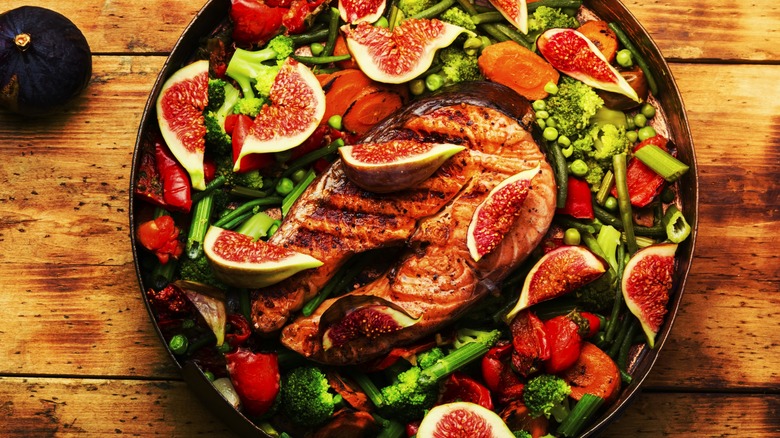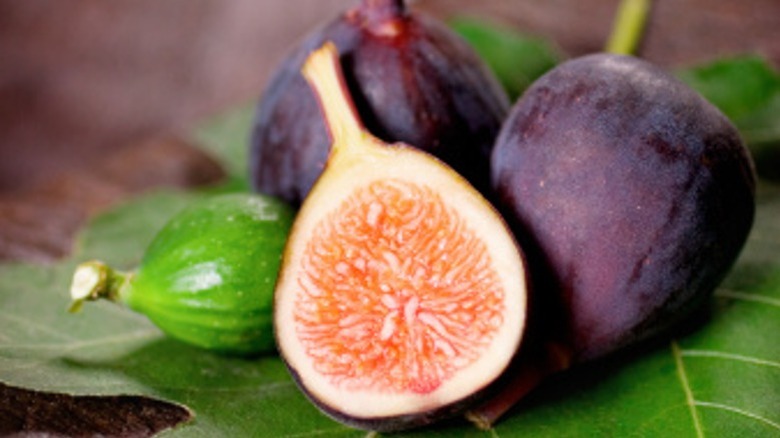How To Use Fig Leaves For Flavorful Salmon
We love the idea of utilizing non-traditional natural ingredients, and leaves from plants and trees are a continual source of usefulness and flavor. Cherokee bean bread is often wrapped in soaked hickory leaves and tied with river grass before boiling, and cooks from Thailand and India wrap fish in banana leaves before grilling. Here's yet another way to employ one of your favorite backyard friends: If you have (or have access to) a fig bush, try wrapping a large, center-cut salmon filet in a dozen or so of its leaves prior to roasting in the oven. The result will be an almost indefinable fruity, earthy smokiness imparted to a delectably tender, moist fish.
Just as when cooking with hickory and banana leaves, fig leaves are not intended to be eaten. But this doesn't mean that what they do is inedible. Freshly plucked from the tree, they impart a peaty bouquet of vanilla and coconut. Smoking fig leaves (whether on the grill or in the oven) transforms their grassiness to a more earthy flavor while taking nothing from their inherent sweetness. Salmon is an ideal vehicle for this verdant expression; you need only to coat the filet with fruity olive oil (we recommend using one from the Mediterranean, where figs originated) and season with salt and pepper before wrapping it top and bottom in fig leaves. What kind of flavors can you expect from the results? The salmon's natural sweetness and buttery texture accented by the fig leaves' peaty, coconut-and-vanilla infusion.
More ways to cook with fig leaves
Because of the inherent flavor complexity that the simple combination of salmon, fig leaves, and olive oil brings to the table, the addition of other ingredients is not necessary. If you are so inclined, we recommend keeping it simple with the addition of delicately flavored things like fennel fronds. You could also try putting fresh lemon slices and garlic powder on top of the filet prior to covering it with fig leaves.
By this point, it should come as no surprise that people make all kinds of food with fig leaves. Like grape leaves, they're often used to wrap cheese, typically ones made with goat's milk. A fig leaf syrup made simply with sugar, water, and fresh leaves, can be as good over waffles and vanilla ice cream as it would in a salad dressing. It should come as no surprise that fig leaf desserts are a thing: You can make smoked fig leaf shortbread cookies that are bound to amaze or infuse that fig leaf flavor into panna cotta. Because they're already redolent with coconut and vanilla, dried fig leaves can also be used to make ice cream, which apparently has a life-altering deliciousness.

